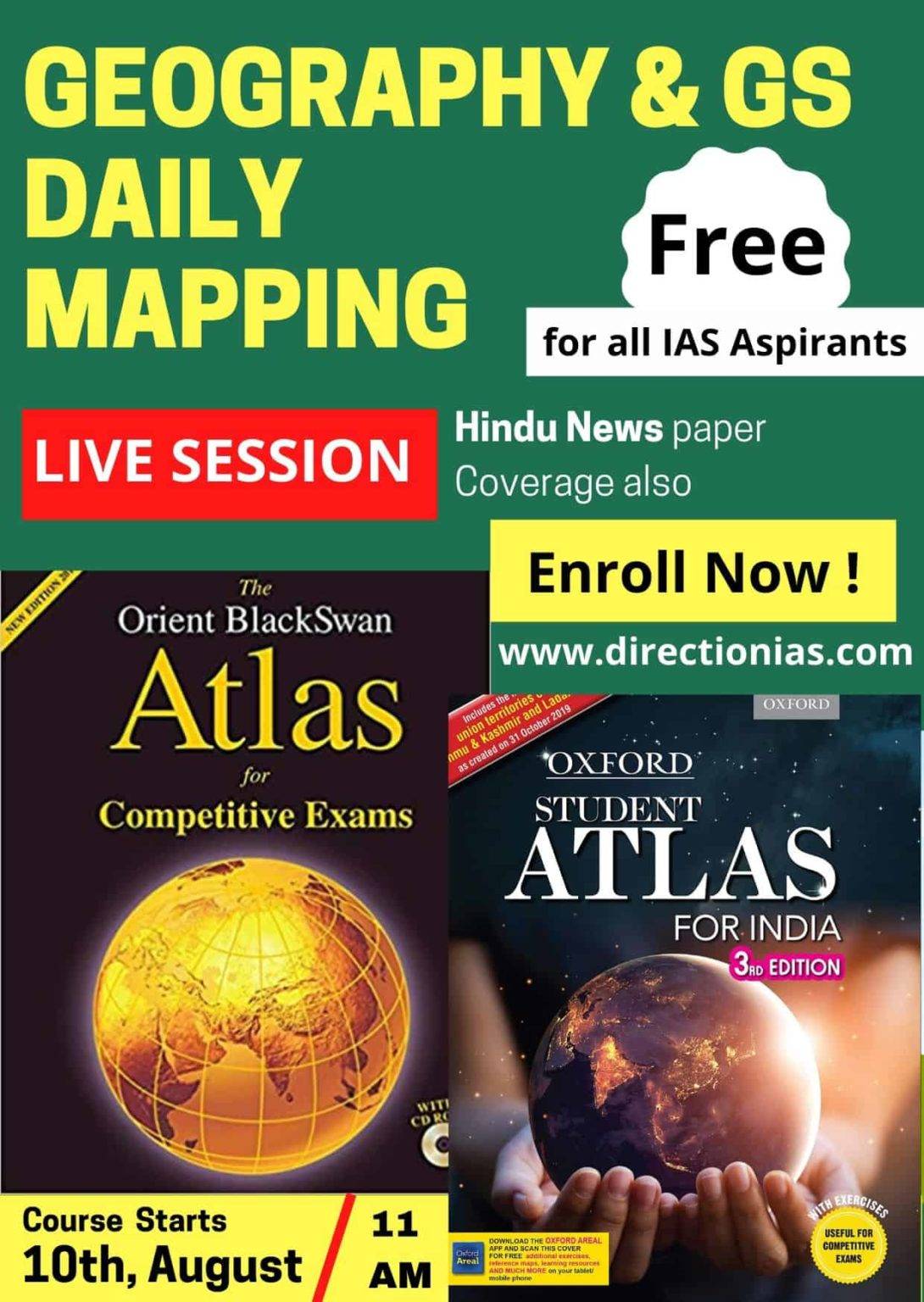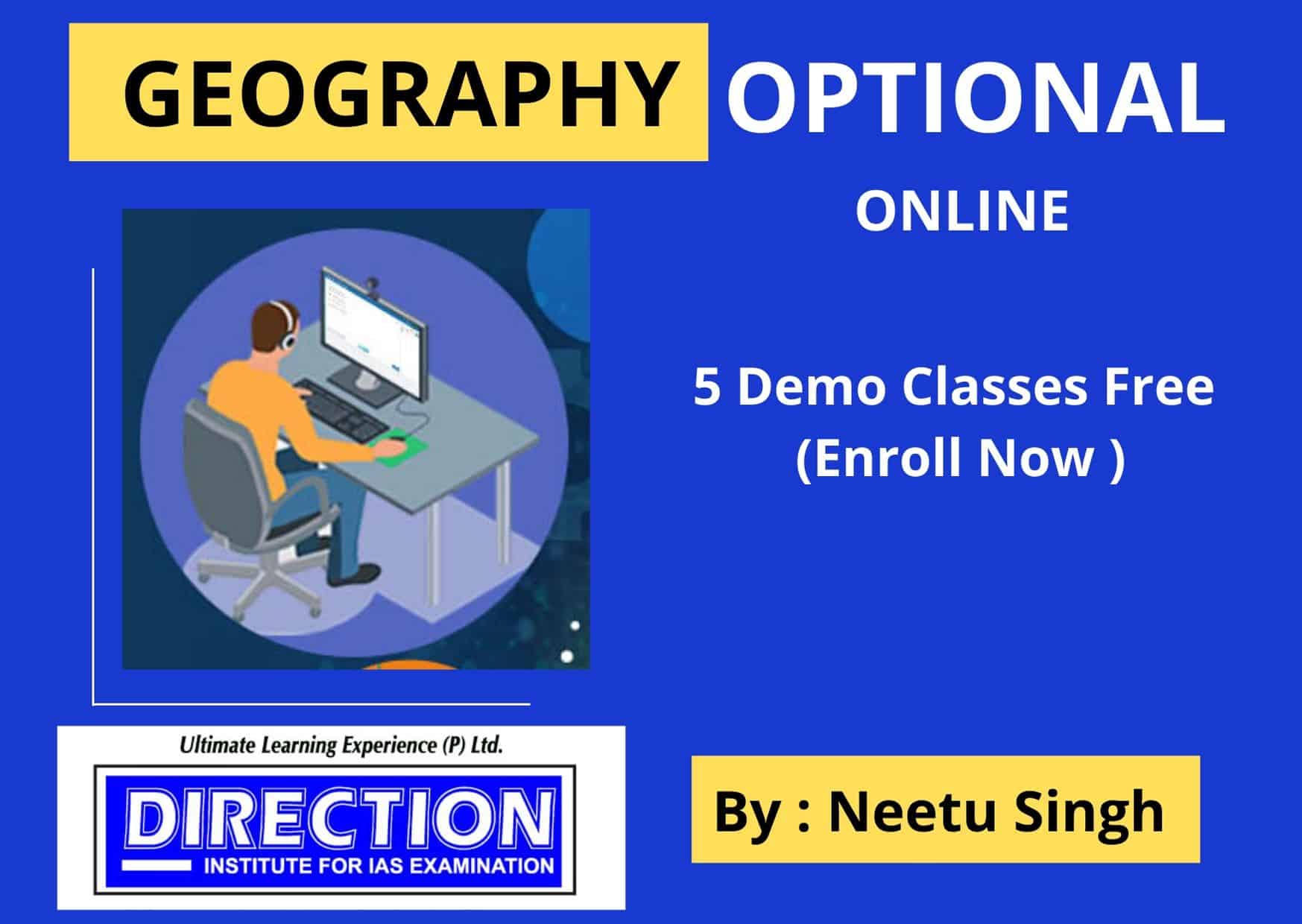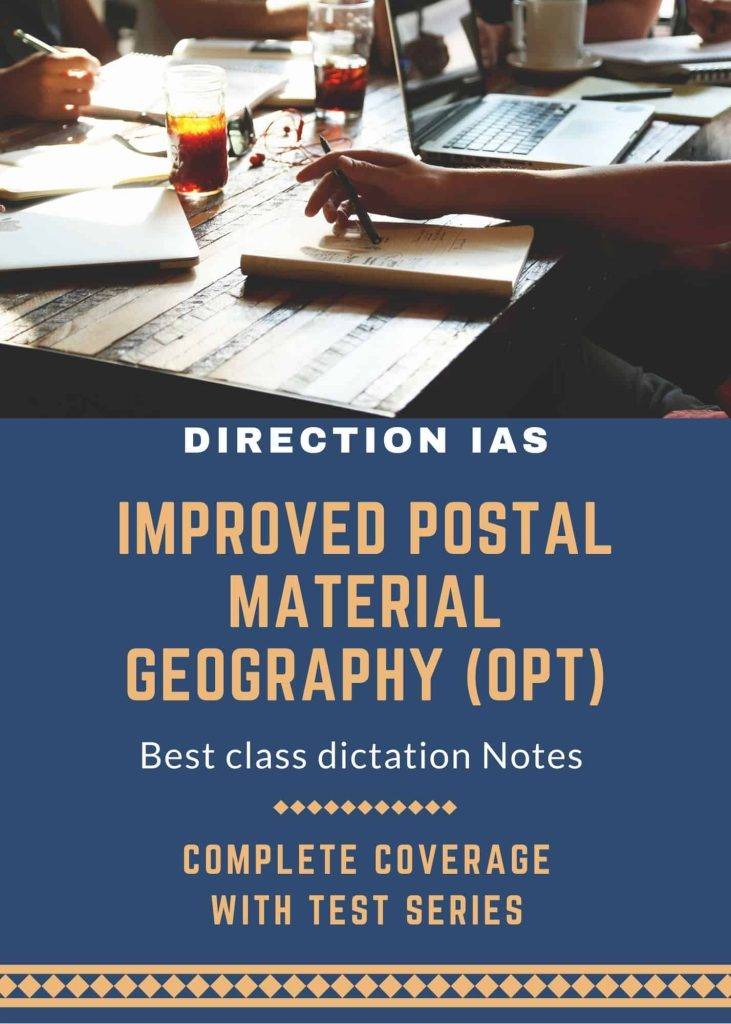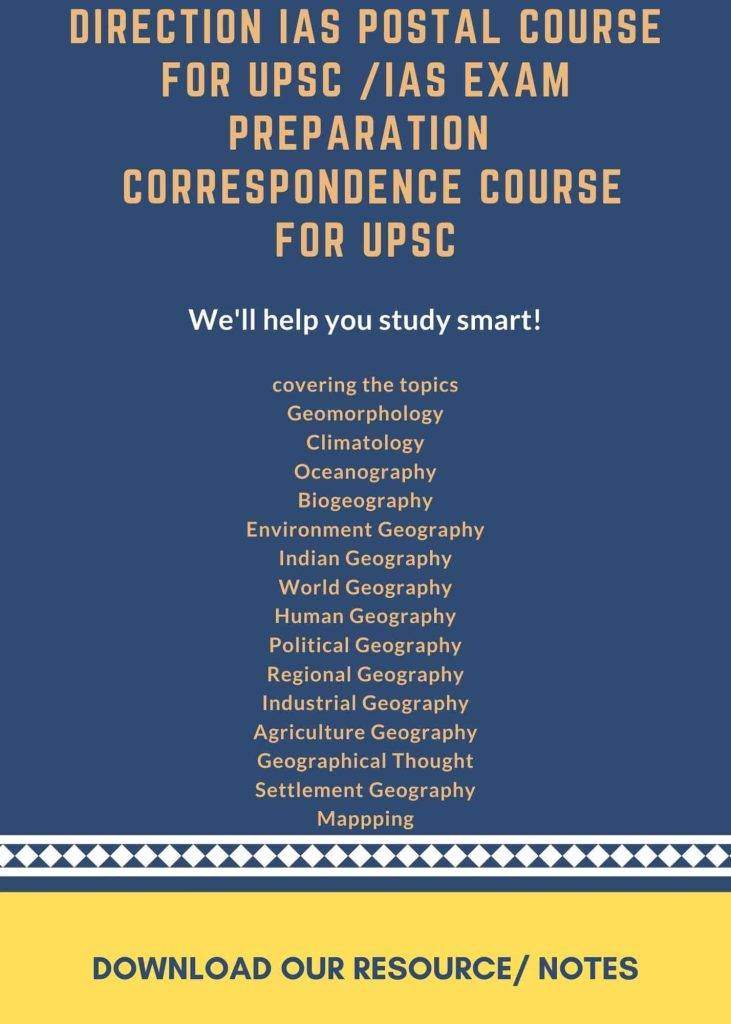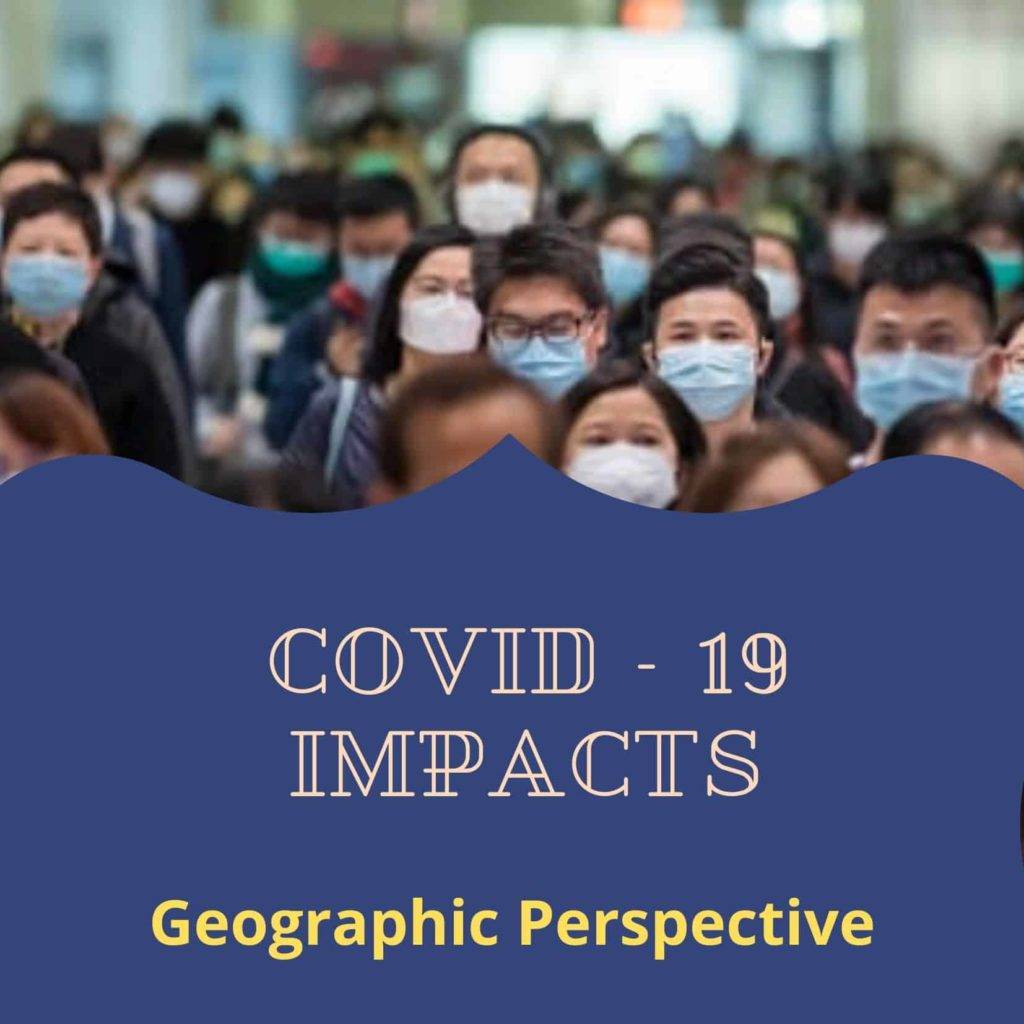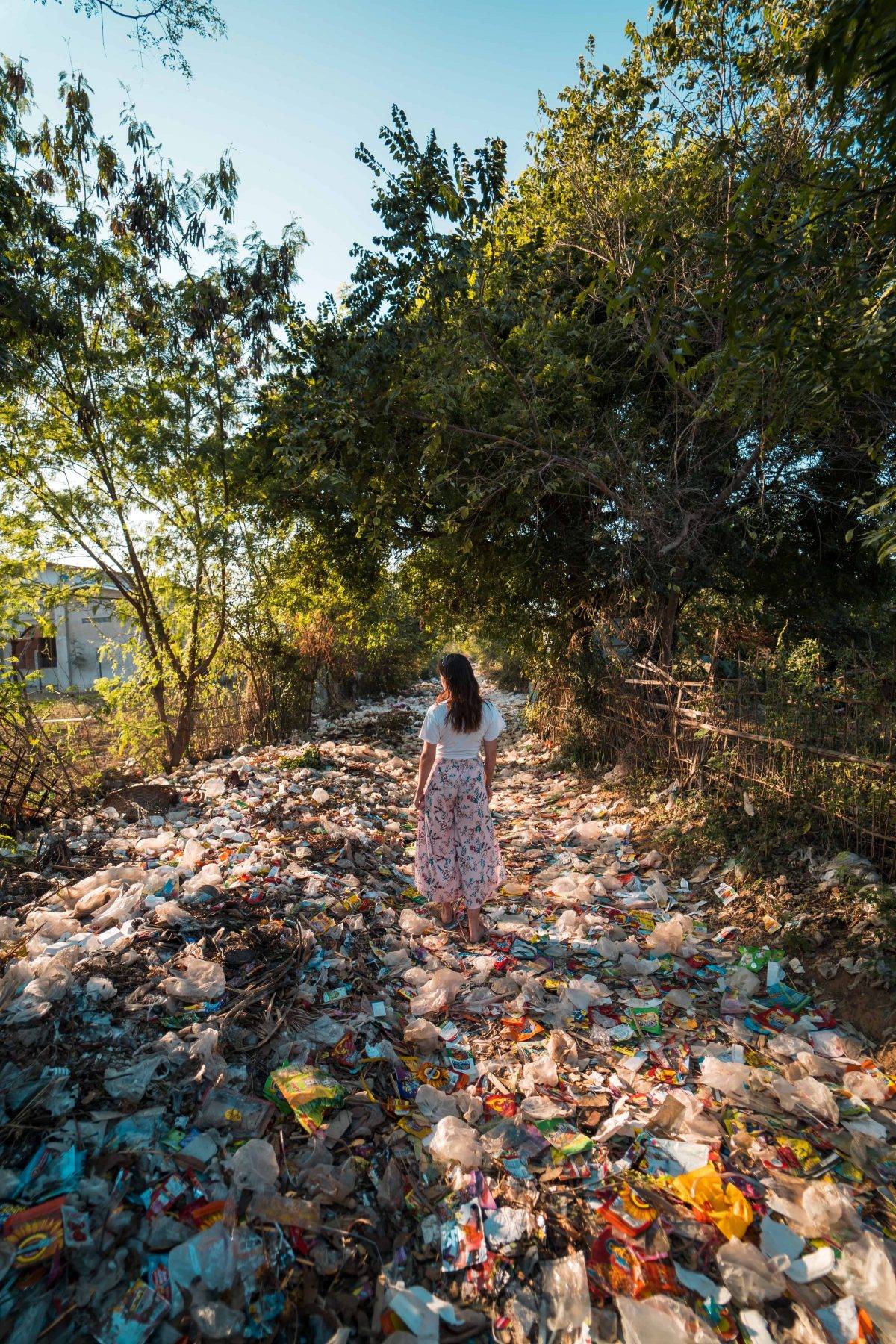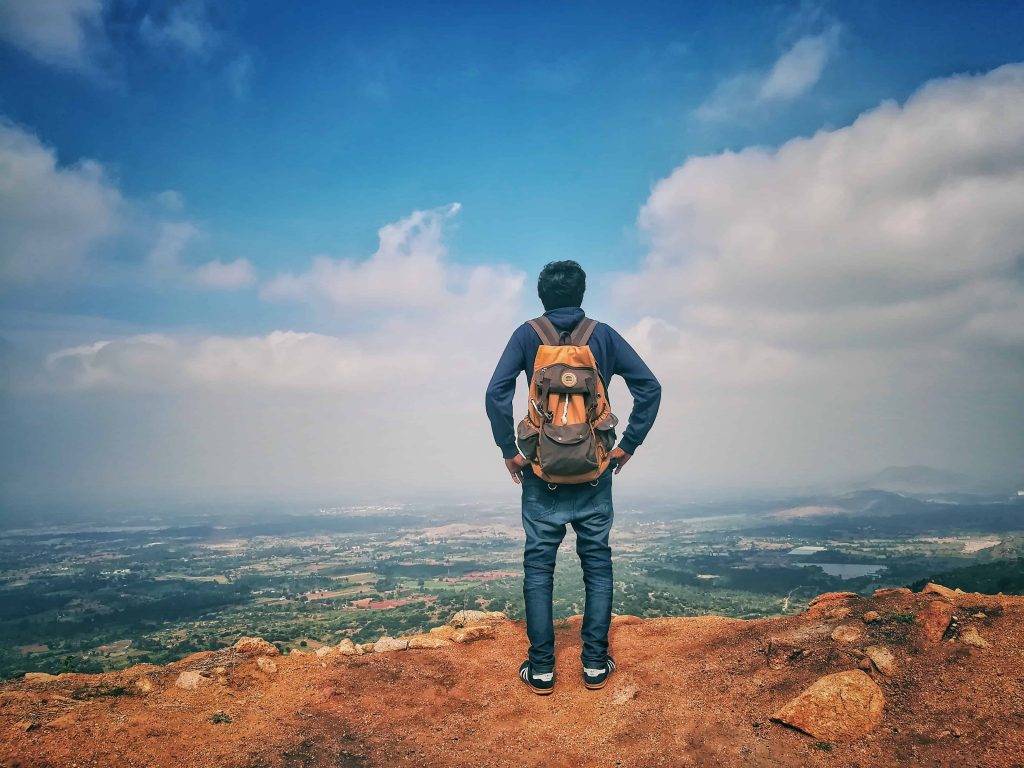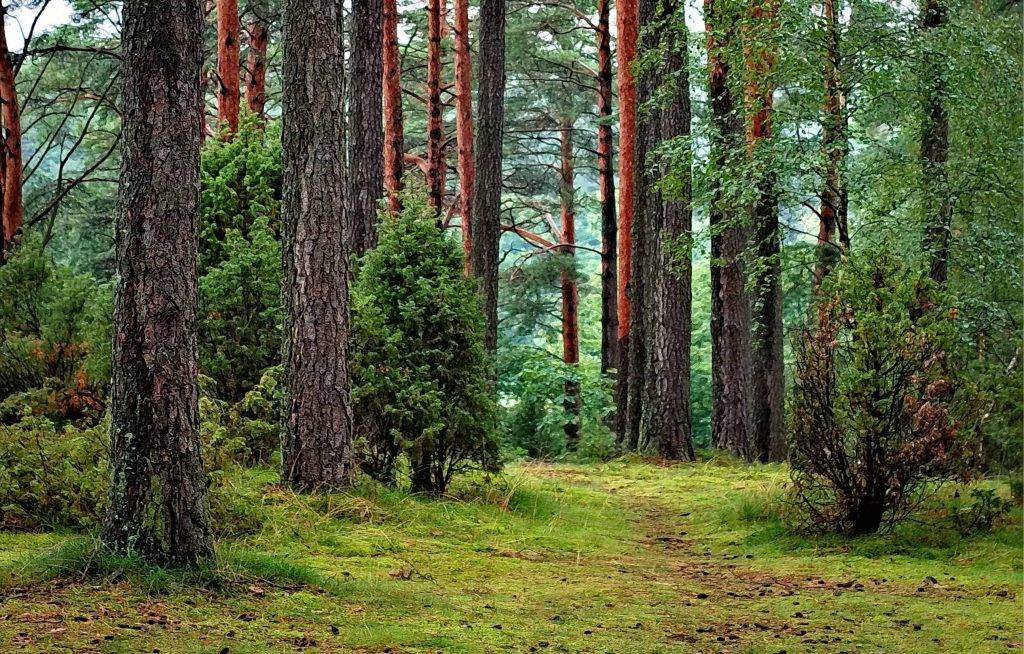Geography Optional Test Series and Content Enrichment Program
Test – 1
Characteristics, Configuration & evolution of rocks and landforms (except Applied Geomorphology) All geomorphology WG ; Physiographic Regions IG, Drainage System IG, Watersheds IG, Relief and Structure IG
Test – 2
Map test of Relief Features of India, Mountains, Plateaus, Hills, Passes, Peaks and Islands
Test – 3
Physical ,Regional Study of Weather/Climate& Oceans (except Applied
Climatology, Urban climate, Marine Resources, Coral Bleaching, Marine Pollution) All Climatology WG, All Oceanography WG; Mechanism of Indian Monsoons IG, Rainfall Pattern IG, Tropical Cyclones IG, Climatic Regions IG, Western Disturbances IG
Test – 4
Map test of Water bodies of India, Plains, Lakes ,Rivers ,Dams, Multipurpose River Valley Projects &Wetlands
Test – 5
Fundamentals of Biosphere Genesis of soil WG, Classification and distribution of soil WG, Soil Profile WG, Factors influencing world distribution of plants & animals WG, Wild life, Gene Pool centres WG; Ecosystems, Principle of Ecology, Biodiversity WG; Human Ecological adaptation WG, Marine resources WG; Natural vegetation, soil types IG, Resources entire IG
Test –6
Map test of Protected Areas of India, Tiger Reserves, ConR, ComR, Elephant Reserves, Biosphere Reserves, Ramsar Sites & Forest Types
Test –7
Environmental Geography (will include All the Important Conventions & Policies of Environment Mitigation & Adaptation in relevance of GS also) Applied Geomorphology WG, Applied Climatology WG, Marine Pollution WG, Problems of soil degradation, deforestation, Ecological imbalances and changesWG, Ecosystem Management & Conservation, Sustainable Development, Environment Policy, Environmental hazards, remedial measures WG; Ecological issues, Environmental hazards, Pollution, Principle of EIA, Soil Erosion, Environmental Degradation, Environmental Policies (Contemporary issues) IG
Test 8
Map test of Agriculture & Resources of India Crop regions ,Areas of agricultural problems Irrigation Sources , Energy ,Mineral& Ocean Resources.
Test – 9
Reproductive Industries World AgricultureWG, Types, agricultural input & productivities, food and nutrition problem, Food security, Agricultural location models WG; All agriculture IG, Food Security IG
Test – 10
Map test of Industries of India Industrial regions ,Location of textile, pharmaceuticals ,iron &steel, automobile ,paper , cement , petro chemical industries
Test – 11
September Manufacturing Geography Energy crisis, World Economic development, Measurement and problems, World industries WG; All Industry IG; Industrial location models WG
Test – 12
September Map test of Transportation Means Roadways ,Railways , Waterways ,Civil Aviation ,Pipeline & Sea Ports.
Test – 1 Characteristics, Configuration & evolution of rocks and landforms
- Factors controlling landform development (WG)
- Endogenetic and exogenetic forces (WG)
- Origin and evolution of the earth’s crust (WG)
- Fundamentals of geomagnetism (WG)
- Physical conditions of the earth’s interior (WG)
- Geosynclines (WG)
- Continental drift (WG)
- Isostasy; Plate tectonics (WG)
- Recent views on mountain building (WG)
- Vulcanicity; Earthquakes and Tsunamis (WG)
- Concepts of geomorphic cycles and Landscape development (WG)
- Denudation chronology (WG)
- Channel morphology (WG)
- Erosion surfaces; Slope development (WG)
- Structure and relief of India (IG)
- Drainage systems and watersheds (IG)
- Physiographic regions of India (IG)
Physical ,Regional Study of Weather/Climate and Oceans
- Temperature and pressure belts of the world (WG)
- Heat budget of the earth (WG)
- Atmospheric circulation (WG)
- Atmospheric stability and instability (WG)
- Planetary and local winds (WG)
- Monsoons and jet streams (WG)
- Air masses and frontal genesis (WG)
- Temperate and tropical cyclones (WG)
- Types and distribution of precipitation (WG)
- Weather and Climate (WG)
- Koppen’s, Thornthwaite’s and Trewartha’s classification of world climates (WG)
- Hydrological cycle (WG)
- Mechanism of monsoons and rainfall patterns of India (IG)
- Tropical cyclones and Western Disturbances of India (IG)
- Floods and Droughts of India (IG)
- Climatic Regions of India (IG)
- Bottom topography of the Atlantic, Indian and Pacific Oceans (WG)
- Temperature and salinity of the oceans (WG)
- Heat and salt budgets (WG)
- Ocean deposits (WG)
- Waves, currents and tides (WG)
- Laws of the sea (WG)
Fundamentals of Biosphere
- Genesis of soils (WG)
- Classification and distribution of soils (WG)
- Soil profile (WG)
- Soil erosion (WG)
- Degradation and conservation (WG)
- Factors influencing world distribution of plants and animals (WG)
- Problems of deforestation and conservation measures (WG)
- Social forestry; agro-forestry (WG)
- Wild life (WG)
- Major gene pool centres (WG)
- Principle of ecology (WG)
- Human ecological adaptations (WG)
- Influence of man on ecology and environment (WG)
- Natural vegetation (IG)
- Soil types and their distributions (IG)
- Land,surface and ground water, energy, minerals, biotic and marine resources (IG)
- Forest and wild life resources and their conservation (IG)
- Energy crisis (IG)
Environmental Geography
- Applied Geomorphology (WG)
- Geo hydrology (WG)
- Economic geology and environment (WG)
- Global climatic change and role and response of man in climatic changes (WG)
- Applied climatology and Urban climate (WG)
- Marine resources: biotic, mineral and energy resources (WG)
- Coral bleaching (WG)
- Sea-level changes (WG)
- Marine pollution (WG)
- Global and regional ecological changes and imbalances (WG)
- Ecosystem their management and conservation (WG)
- Environmental degradation, management and conservation (WG)
- Biodiversity and sustainable development (WG)
- Environmental policy (WG)
- Environmental hazards and remedial measures (WG)
- Environmental education and legislation (WG)
- Ecological issues (IG)
- Environmental hazards (IG)
- Landslides, earthquakes, Tsunamis, floods and droughts, epidemics (IG)
- Issues relating to environmental pollution (IG)
- Changes in patterns of land use(IG)
- Principles of environmental impact assessment and environmental management (IG)
- Environmental degradation; Deforestation, desertification and soil erosion (IG)
Reproductive Industries
- World agriculture (WG)
- Typology of agricultural regions (WG)
- Agricultural inputs and productivity (WG)
- Food and nutrition problems (WG)
- Food security (WG)
- Famine: causes, effects and remedies (WG)
- Von Thunen’s model of agricultural location (WG)
- Infrastructure: irrigation, seeds, fertilizers, power (IG)
- Institutional factors: land holdings, land tenure and land reforms (IG)
- Cropping pattern, agricultural productivity, agricultural intensity (IG)
- Crop combination, land capability (IG)
- Agro and social-forestry (IG)
- Green revolution and its socio-economic and ecological implications (IG)
- Significance of dry farming (IG)
- Livestock resources and white revolution; aqua-culture; sericulture (IG)
- Apiculture and poultry (IG)
- Agricultural regionalisation (IG)
- Agro-climatic zones (IG)
- Agro-ecological regions (IG)
- Population explosion and food security (IG)
Manufacturing Geography
- Tourism including eco –tourism (IG)
- Energy crisis (WG)
- The limits to growth (WG)
- World industries: Location patterns and problems (WG)
- Weber’s model of industrial location (WG)
- Evolution of industries (IG)
- Location factors of cotton, jute, textile, iron and steel, aluminum, fertilizer, paper, chemical and pharmaceutical, automobile, cottage and agro-based industries (IG)
- Industrial houses and complexes including public sector undertakings (IG)
- Industrial regionalization (IG)
- New industrial policies (IG)
- Multinationalsand liberalization (IG)
- SpecialEconomic Zones (IG)
Facilitative Industries
- Patterns of world trade (WG)
- Road, railway, waterway (IG)
- Airway and pipeline networks (IG)
- Their complementary roles in regional development (IG)
- Growing importance of ports on national and foreign trade(IG)
- Trade balance (IG)
- Trade Policy (IG)
- Export processing zones(IG)
- Developments in communication and information technology and their impacts on economy and society (IG)
- Indian space programme(IG)
Regional Developments and Planning and Political Aspects
- Concept of a region (WG)
- Types of regions and methods of regionalization (WG)
- Growth centres and growth poles (WG)
- Regional imbalances (WG)
- Regional development strategies (WG)
- Environmental issues in regional planning (WG)
- Planning for sustainable development (WG)
- Perroux and Boudeville Rostov’s model of stages of growth (WG)
- Experience of regional planning in India (IG)
- Five Year Plans; Integrated rural development programmes (IG)
- Panchayati Raj and decentralized planning (IG)
- Command area development (IG)
- Watershed management (IG)
- Planning for backward area, desert drought prone, hill, tribal area development (IG)
- Multi-level planning (IG)
- Regional planning and development of island territories (IG)
- Problems of agrarian and industrial unrest (IG)
- Regional disparities in economic development (IG)
- Concept of sustainable growth and development (IG)
- Environmental awareness (IG)
- Linkage of rivers (IG)
- Globalization and Indian economy (IG)
- Heartland and Rimland theories (WG)
- Laws of international boundaries and frontiers (WG)
- Geographical basis of Indian federalism (IG)
- State re-organization (IG)
- Emergence of new states (IG)
- Regional consciousness and interstate issues (IG)
- international boundary of India and related issues (IG)
- Cross border terrorism (IG)
- India’s role in world affairs (IG)
- Geopolitics of South Asia and Indian Ocean realm (IG)
Perspectives in Human Geography Population and Settlement Geography
- Areal differentiation (WG)
- Regional synthesis (WG)
- Dichotomy and dualism (WG)
- Environmentalism (WG)
- Quantitative revolution and location analysis (WG)
- Radical, behavioral, human and welfare approaches (WG)
- Languages,religions and secularisation (WG)
- Cultural regions of the world (WG)
- Human development index (WG)
- Systems analysis in Human geography (WG)
- Malthusian, Marxian and demographic transition models (WG)
- Growth and distribution of world population (WG)
- Demographic attributes (WG)
- Causes and consequences of migration (WG)
- Concepts of over-under-and optimum population (WG)
- Population theories (WG)
- World population problems and policies (WG)
- Social well-being and quality of life (WG)
- Population as social capital (WG)
- Types and patterns of rural settlements (WG)
- Environmental issues in rural settlements (WG)
- Hierarchy of urban settlements (WG)
- Urbanmorphology (WG)
- Concepts of primate city and rank-size rule (WG)
- Functional classification of towns (WG)
- Sphere of urban influence (WG)
- Rural-urban fringe; Satellite towns (WG)
- Problems and remedies of urbanization (WG)
- Sustainable development of cities (WG)
Cultural Setting and Settlements
- Historical Perspective of Indian Society(IG)
- Racial, linguistic and ethnic diversities (IG)
- Religious minorities (IG)
- Major tribes, tribal areas and their problems(IG)
- Cultural regions (IG)
- Growth, distribution and density of population (IG)
- Demographic attributes (IG)
- Sex-ratio, age structure, literacy rate (IG)
- Work-force, dependency ratio (IG)
- Longevity (IG)
- Migration (inter-regional, intra- regional and international) and associated problems (IG)
- Population problems and policies (IG)
- Health indicators (IG)
- Types, patterns and morphology of rural settlements (IG)
- Urban development (IG)
- Morphology of Indian cities (IG)
- Functional classification of Indian cities (IG)
- Conurbations and metropolitan regions (IG)
- Urban sprawl (IG)
- Slums and associated problems (IG)
- Town planning (IG)
- Problemsof urbanization and remedies (IG)



